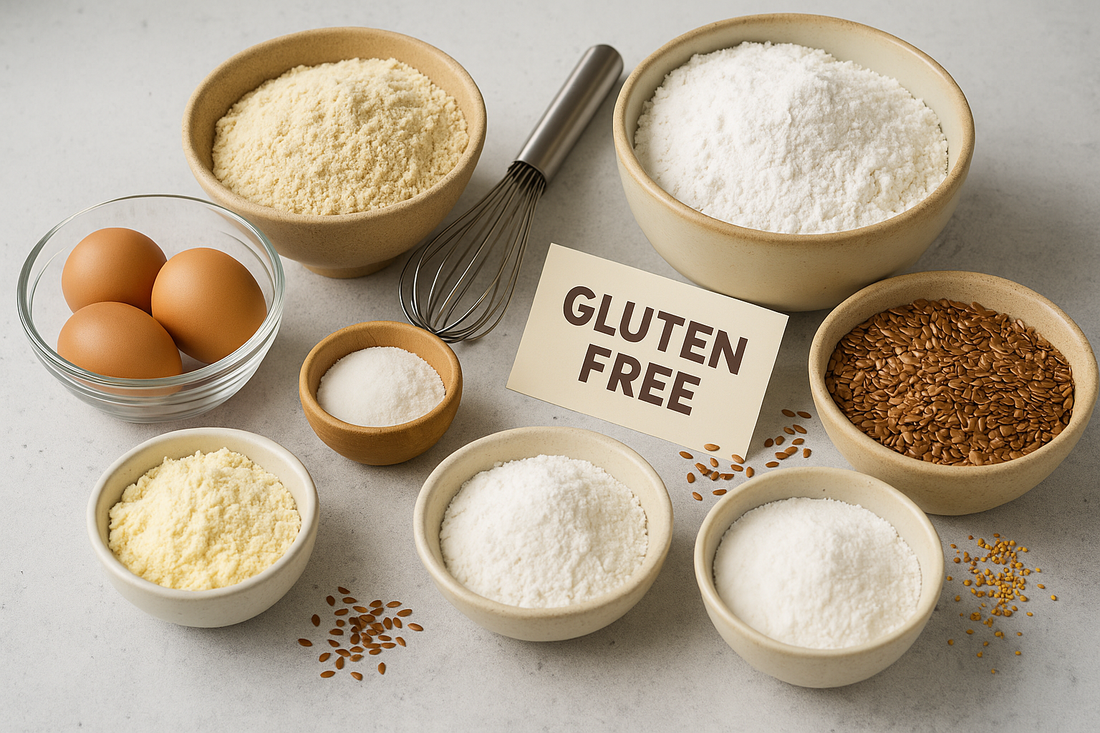
The Science of Gluten-Free Baking
Share
Baking without gluten can feel like trying to pull off magic. The truth is, there’s a little science behind every fluffy cupcake or tender slice of cake. Once you know how gluten-free flours behave differently, it all starts to make sense.
Gluten’s Job in Traditional Baking
In wheat-based baking, gluten is the invisible framework. When flour mixes with water, proteins (gliadin + glutenin) form stretchy strands that trap gas from yeast or leavening agents. That’s what gives bread its chew, cakes their lift, and pastries their structure.
Without it, batters and doughs lose that built-in scaffolding, crumbles can fall apart, textures can get dense, and rise can be unpredictable.
What Changes in Gluten-Free Baking
Take away gluten, and you need new tools to rebuild the structure. That’s where smart combinations of flours and binders come in.
Absorption: Gluten-free flours (like rice, sorghum, or almond) soak up more liquid than wheat flour, so recipes often feel wetter. This extra hydration is essential for preventing gritty or crumbly textures.
Binding: Instead of gluten strands holding things together, you rely on eggs, psyllium husk, chia, flax, or xanthan gum to provide elasticity and structure. Some recipes call for an extra egg, while others use no eggs at all but lean harder on plant-based binders.
Fat & Moisture: Ingredients like yogurt, oil, or nut butters help keep things soft and prevent drying out too quickly.
The Role of Leavening Agents
Gluten-free batters need all the help they can get when it comes to rise. Baking powder, baking soda, and even whipped egg whites provide the lift that gluten-free flours can’t manage on their own. Because these doughs are often denser, the right leavening balance keeps bakes from turning heavy.
Tips for Success
Blend smartly: A mix of flours and starches always outperforms one single flour.
Hydrate fully: Resting or chilling the batter allows the flours to absorb liquid evenly, improving texture.
Experiment small: Baking in micro-batches lets you test tweaks without wasting ingredients.
Gluten-free baking isn't about making up for what's missing, it's about using science and creativity to create bakes with their own unique magic. That's the philosophy we bring into every recipe, because baking should be fun, not complicated.✨
Key Takeaways
Extra absorption
Gluten-free flours soak up more liquid, so hydration is key.
Binders at work
Psyillium, xantham gum, or eggs help hold everything together.
Lift matters
Leavening agents keep gluten-free bakes light instead of dense
